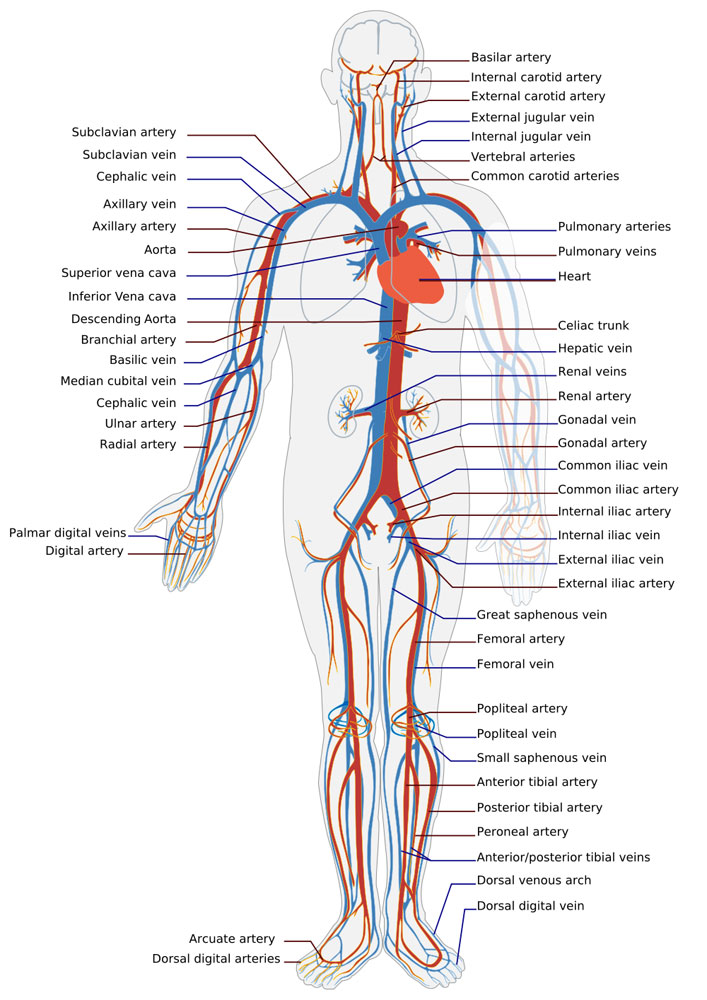Circulatory system - structure, functions
Arteries
• They transport blood from the HEART to all BODY CELLS. Their walls are made of layers that expand and contract with the beating of the heart.
• Arteries are elastic and this is due to the presence of a large number of elastic fibers in their structure. Thick, resilient and flexible walls withstand the high blood pressure.
• The arteries never collapse. The blood flowing through the arteries is light in color, this is due to the high oxygen content
(the exception is the pulmonary artery through which deoxygenated blood flows)
Veins
• They transport blood from the BODY CELLS to the HEART. Their walls, like the walls of arteries, are made of layers, but much thinner.
• Veins can collapse. In the veins, the backflow of blood is prevented by valves.
• The blood flowing through the veins is dark red due to the high content of carbon dioxide (the exception is the pulmonary vein through which oxygenated blood flows)
Capillary vessels
They are tiny blood vessels that wrap around tissues and go everywhere. The wall of the blood vessel is made of a single-layer, flat epithelium. This structure enables easy exchange of substances between blood and tissue fluid. The liver is an example of an organ with a very extensive network of capillaries.




Comments
Post a Comment